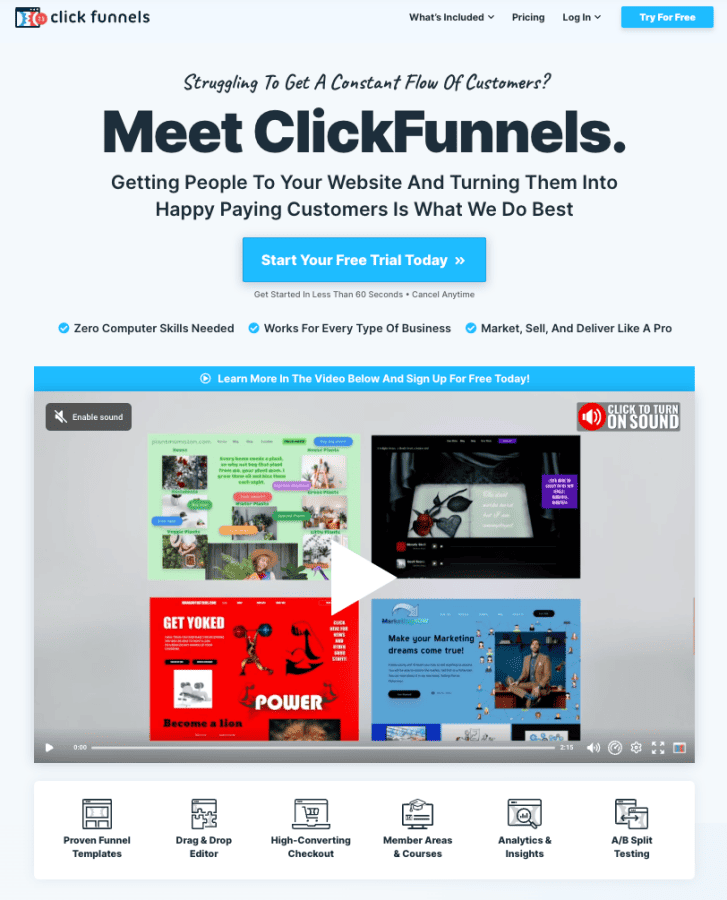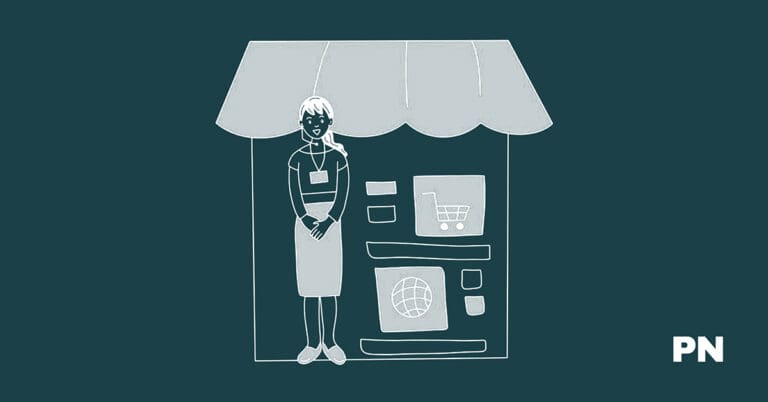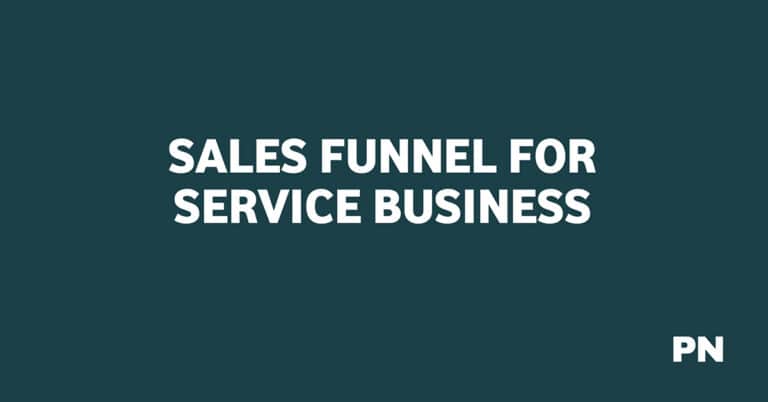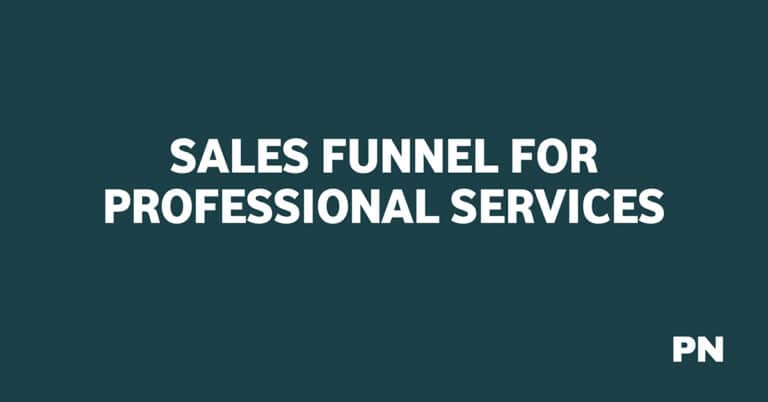Sales Funnel for Dummies: A Comprehensive Guide
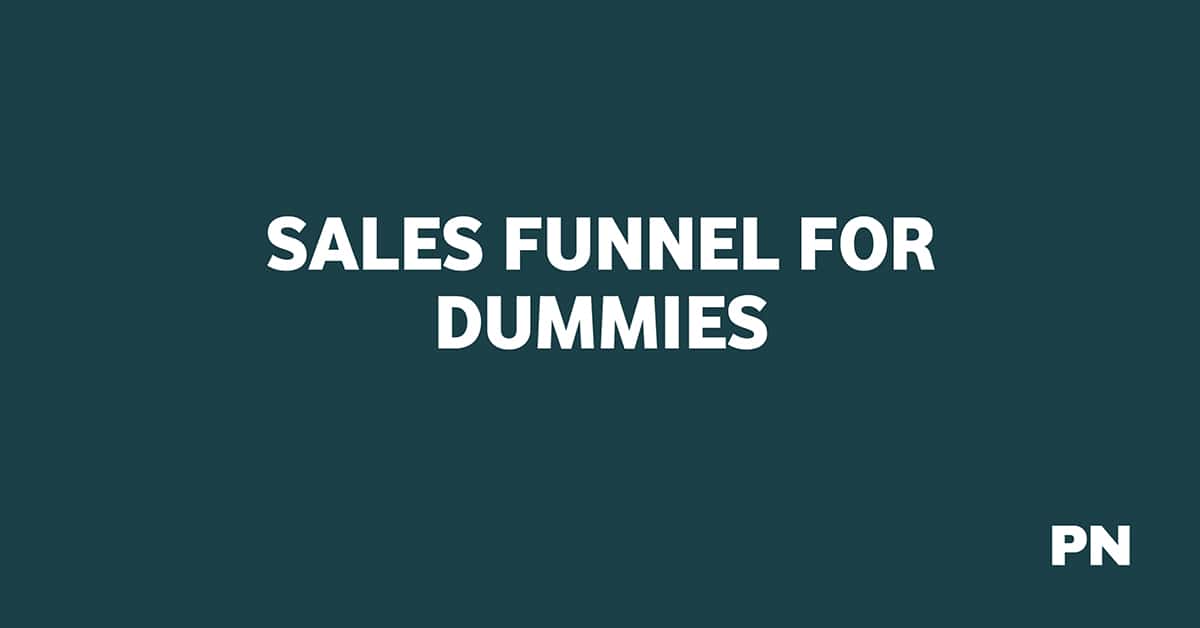
Sales funnels can be daunting for those new to the business world. You may have heard of sales funnels before, but do you understand what they are and how they work?
According to a recent survey, over 60% of small businesses do not have a documented sales funnel strategy. This means that they are missing out on potential sales and revenue.
You’ve come to the right place if you are a business beginner and want to learn more about sales funnels.
In this Sales Funnel for Dummies Guide, I will break down the basics of sales funnels and provide a step-by-step guide to creating your own.
Whether you’re a small business owner, an entrepreneur, or a marketer, this guide will help you understand the ultimate goal of a sales funnel and how it can benefit your business.
What is a Dummy Sales Funnel?

A dummy sales funnel is a simplified funnel designed to help beginners understand the concept. It is a visual representation of a customer’s steps to make a purchase.
A dummy sales funnel aims to help you understand the customer journey and identify areas where you can improve your marketing and sales efforts.
A dummy sales funnel typically consists of four stages: Awareness, Interest, Decision, and Action. These stages represent the different steps that a customer goes through before making a purchase.
Here is a breakdown of each stage:
- Awareness: This is the stage where the customer becomes aware of your product or service. They may have seen an advertisement or stumbled upon your website. This stage aims to grab the customer’s attention and make them interested in learning more about your product or service.
- Interest: In this stage, the customer is interested in your product or service and actively seeks more information. They may be comparing your product or service to other options on the market. The goal of this stage is to provide the customer with the information they need to make an informed decision.
- Decision: This is the stage where the customer decides whether or not to purchase your product or service. They may weigh the pros and cons or consider other factors such as price or availability. This stage aims to convince the customer that your product or service is the best choice for them.
- Action: This is the final stage where the customer makes a purchase. This stage aims to make the purchasing process as easy and seamless as possible for the customer.
By understanding the different stages of a dummy sales funnel, you can identify areas where you need to improve your marketing and sales efforts.
For example, if you are not getting enough traffic to your website, you may need to focus on improving your awareness stage. You may need to improve your decision stage if you get a lot of traffic but not many sales.
Why You Need a Dummy Sales Funnel?
If you want to grow your business, you need a sales funnel.
A sales funnel is a strategic process that helps you guide your potential customers through the buying journey. It’s a series of steps that you take your prospects through, from the moment they become aware of your product or service to the point where they become paying customers.
Here are a few reasons why you need a dummy sales funnel:
1. Increases Conversion Rates
A sales funnel helps you increase your conversion rates. By guiding your prospects through the buying journey, you can address their needs and concerns at each stage of the funnel. This helps you build trust with your prospects and increases their chances of becoming paying customers.
2. Streamlines Your Sales Process
A sales funnel helps you streamline your sales process. By taking your prospects through a series of steps, you can identify where they are in the buying journey and tailor your sales pitch accordingly. This helps you save time and resources by focusing on the prospects most likely to convert.
3. Provides Valuable Insights
A sales funnel provides valuable insights into your customer’s buying journey. By tracking your prospects’ progress through the funnel, you can identify areas where they drop off and adjust your strategy accordingly. This helps you optimize your sales process and increase conversion rates over time.
In conclusion, a dummy sales funnel is crucial for any business looking to grow. It helps you increase your conversion rates, streamline your sales process, and provide valuable insights into your customers’ buying journey. By implementing a sales funnel, you can take your business to the next level and achieve your desired growth.
Stages of the Dummies Sales Funnel
A sales funnel is a model that illustrates the customer’s journey towards purchasing any product or service. It helps you understand your customers’ mindset and tailor your marketing efforts accordingly.
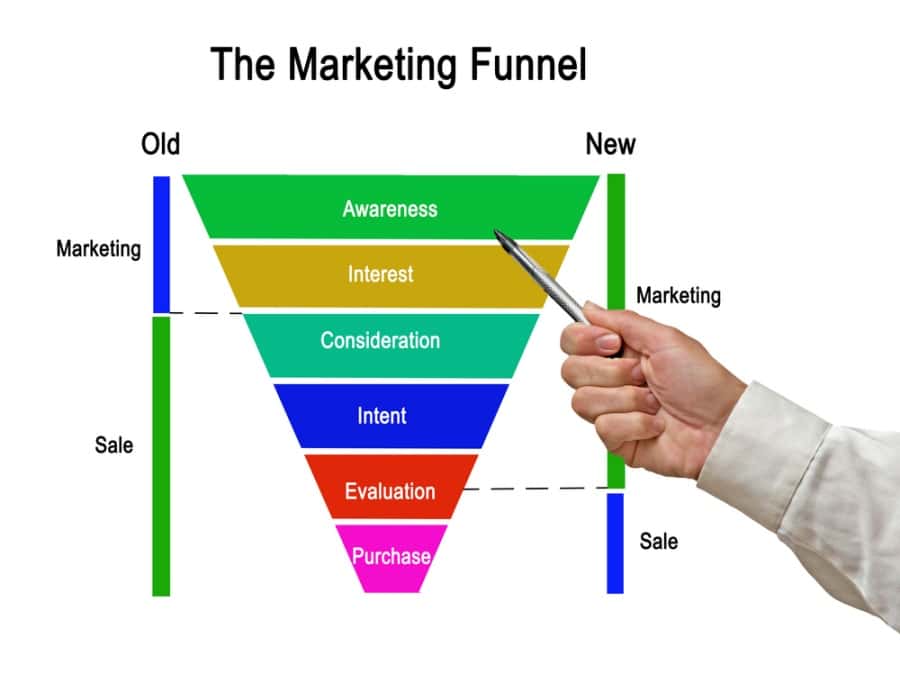
The dummy sales funnel consists of five stages: The Awareness Stage (Top of the Funnel, TOFU), The Consideration/Evaluation Stage (MOFU), the Purchase Stage (Bottom Of The Funnel), Post-Purchase, and Repeat Purchase.
Each stage is crucial to the success of your business, and understanding them can help you create an effective marketing strategy.
The Awareness Stage (Top of the Funnel, TOFU)
The first stage of the dummies sales funnel is the awareness stage. This is where potential customers become aware of your product or service.
At this stage, your goal is to attract as many people as possible to your website or social media pages.
You can achieve this by creating valuable content that addresses your target audience’s pain points. For instance, if you sell weight loss supplements, you can create blog posts or videos that provide tips on how to lose weight.
This will attract people who are interested in weight loss to your website.
The Consideration/Evaluation Stage (MOFU)
In the consideration/evaluation stage, potential customers consider your product or service. At this stage, you aim to provide enough information to help them make an informed decision.
You can achieve this by providing product demos, free trials, or case studies. For instance, if you sell software, you can offer a free trial that allows potential customers to test the software’s features. This will help them understand how the software works and how it can benefit their business.
Purchase Stage (Bottom Of The Funnel)
In the purchase stage, potential customers decide to purchase your product or service. Your goal is to make the purchase process as smooth as possible.
You can achieve this by providing a user-friendly checkout process and offering multiple payment options. For instance, you can offer credit card payments, PayPal payments, or bank transfers. This will make it easy for customers to pay for your product or service.
Post-Purchase Stage
The post-purchase stage is where you follow up with customers after they have made a purchase. At this stage, you aim to provide excellent customer service and build relationships with your customers.
You can achieve this by sending follow-up emails, providing product support, and offering loyalty programs. For instance, you can send a thank-you email after a customer makes a purchase or offer a discount on their next purchase.
Repeat Purchase Stage
The final stage of the dummies sales funnel is the repeat purchase stage, where you encourage customers to make repeat purchases.
At this stage, you aim to provide excellent customer service and incentivize customers to return.
You can achieve this by offering loyalty programs, discounts on future purchases, or sending personalized recommendations. For instance, if a customer purchases a weight loss supplement, you can send them personalized recommendations for other supplements that might interest them.
The dummy sales funnel is a powerful tool for attracting new clients and building long-term relationships. Understanding the funnel is crucial to your business’s success. By understanding each stage, you can create an effective marketing strategy that attracts potential customers, converts them into paying customers, and encourages them to make repeat purchases.
How Do I Create a Dummy Sales Funnel?
A dummy sales funnel can be straightforward if you follow a few essential steps.
Here’s a step-by-step guide to help you make your own dummy sales funnel:
- Identify Your Target Audience: The first step in creating a dummy sales funnel is to define your target audience. Who do you want to attract to your business? What are their pain points and needs? Knowing your audience is crucial to creating a sales funnel that resonates with them.
- Create a Lead Magnet: A lead magnet is an incentive you offer your potential customers in exchange for their contact information. It could be a free e-book, a discount coupon, or a webinar. The lead magnet should be something that your target audience finds valuable and relevant to their needs.
- Design a Landing Page: A landing page is a web page designed to capture your potential customers’ contact information. It should be simple, visually appealing, and have a clear call to action. The landing page should also include details about the lead magnet you offer.
- Create an Email Sequence: Once you’ve captured the contact information of your potential customers, it’s time to nurture them with a series of emails. The email sequence should provide value to your potential customers and help them understand how your product or service can solve their problems.
- Offer a Tripwire: A tripwire is a low-cost, high-value product you offer your potential customers after entering your sales funnel. It could be an e-book, a mini-course, or a consultation. The tripwire should be closely related to your main product or service.
- Present Your Core Offer: Your core offer is your main product or service. It should solve a specific problem for your target audience. When presenting your core offer, highlight its benefits and how it can help your potential customers.
By following these steps, you can create a dummy sales funnel that attracts potential customers, nurtures them, and converts them into paying customers. Remember to test and tweak your sales funnel regularly to improve its performance.
What is The Best Funnel Software for Dummies?
As a beginner in the world of online marketing, finding the right sales funnel software can be a daunting task. Many options are available, each with its unique set of features and capabilities. However, after careful research and analysis, we have found that ClickFunnels is the best sales funnel software for dummies.
ClickFunnels is a powerful and user-friendly platform designed to help entrepreneurs build effective sales funnels quickly and easily. With its intuitive drag-and-drop interface, even those with no coding experience can create professional-looking funnels in minutes.
One key feature that sets ClickFunnels apart from other sales funnel software is its ability to create upsells and downsells. This means you can offer your customers additional products or services after their initial purchase, increasing your revenue and profitability.
ClickFunnels also includes a shopping cart and checkout system and built-in CRM and analytics tools. This allows you to manage your customer data and track your sales and marketing performance all in one place.
Frequently Asked Questions
What is a funnel in dummies business?
A funnel is a marketing concept that represents a customer’s journey from awareness to purchase. In dummies business, a sales funnel is a step-by-step process that guides potential customers toward purchasing.
It is called a “funnel” because it is shaped like a funnel, with a wide opening at the top and a narrow opening at the bottom.
What are the key stages in developing a dummy sales funnel?
The key stages in developing a dummy sales funnel are:
- Awareness: This is when potential customers become aware of your product or service.
- Interest: At this stage, potential customers show interest in your product or service.
- Decision: This is the stage where potential customers decide whether or not to purchase your product or service.
- Action: The final stage is when customers take action and purchase your product or service.
How do you create an effective dummies sales funnel?
To create an effective dummies sales funnel, you need to:
- Identify your target audience and their needs.
- Develop a clear value proposition that meets their needs.
- Create a landing page that effectively communicates your value proposition.
- Use lead magnets to capture potential customers’ contact information.
- Nurture leads through email marketing and other channels.
- Close the sale by providing a clear call to action.
How can I optimize my dummy funnel for higher conversion rates?
To optimize your dummy funnel for higher conversion rates, you can:
- Test different landing pages and lead magnets to see which ones perform best.
- Use A/B testing to optimize your email marketing campaigns.
- Use retargeting ads to bring potential customers back to your website.
- Continuously analyze your funnel metrics to identify areas for improvement.
What metrics are crucial for analyzing the performance of a dummy funnel?
The metrics that are crucial for analyzing the performance of a dummy funnel are:
- Conversion rate: The percentage of potential customers who complete the desired action.
- Cost per acquisition: The cost of acquiring a new customer.
- Customer lifetime value: The total revenue a customer generates over their lifetime.
- Return on investment: The ratio of revenue generated to the cost of the marketing campaign.
How do industry benchmarks influence dummies conversion funnel performance?
Industry benchmarks can influence dummy conversion funnel performance by comparing your funnel’s performance against industry standards. By analyzing industry benchmarks, you can identify areas where your funnel is underperforming and make adjustments to improve its performance.
Wrapping Up
Congratulations! You have now learned the basics of sales funnels.
You know what they are, how they work, and how to create one for your business. Following the steps outlined in this guide, you can make a sales funnel that will help you attract more prospects, convert them into customers, and ultimately grow your business.
Remember that sales funnels are not a one-time thing. You must continually test and optimize your funnel to ensure it works effectively. This may involve tweaking your messaging, adjusting your offers, or changing the layout of your funnel.
To help you stay on track, here are a few final tips:
- Keep your messaging consistent throughout your funnel. Ensure your prospects understand your offering and why they should buy from you.
- Use compelling visuals and copy to capture your audience’s attention. People are likelier to engage with your funnel if it looks professional and trustworthy.
- Don’t be afraid to experiment with different offers and pricing strategies. Sometimes, a small change can significantly affect your conversion rates.
By following these tips and refining your funnel over time, you can create a powerful marketing tool to help you achieve your business goals. Good luck!
Disclosure: We may earn commissions if you buy via links on our website. Commissions don’t affect our opinions or evaluations. We’re also an independent affiliate of many platforms, including ClickFunnels, Kartra, GoHighLevel, Podia, Northwest Registered Agent, and others. We’re not employees of these services. We receive referral payments from them, and the opinions expressed here are our own and are not official statements of these companies.
